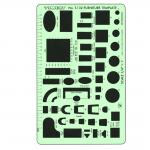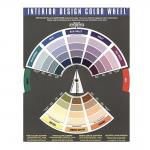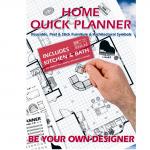Furniture Terms from D - F
The Whole Truth & Nothing but the Truth! There are links and ads on this site that pay us a commisson if you "click" and purchase something. This helps us to keep the lights on and continue to provide free content. Thanks! Now you may continue reading!
Dado: This is a groove cut into the inside of drawer stock. The bottom of the drawer slides into the groove before the back of the drawer is attached. This makes the drawer and the drawer bottom stronger. Glue blocks are usually added to the outside of the bottom in the corners and along the edges.
Davenport: An anachronistic term, dating back to my youth, referring to sofas or couches.
Dentil Moulding: Think of George Washington’s wooden teeth. This word comes from the same latin root as dental. This type of moulding is a series of square cuts with smaller spaces between them. The effect is similar to teeth. By the way, I read recently that the general’s teeth weren’t wood but were actually ivory.
Draft Chair: A chair with protrusions coming from the back. These structures were designed to block the chilly drafts in the mansions and castles of the time. This style became what we call a wing chair today.
Dresser: A long low case piece with drawers and sometimes doors, designed to hold clothing. There is, often, a mirror attached to the back.
Drop Front Desk: This is a desk that has a sloping front that is hinged at the bottom and folds down to become the writing surface. There is normally a gallery with little cubby holes and small drawers for writing supplies behind the drop front.
Drop Leaf Table: A table with a top that has leaves that fold up to expand the dining area and down when they are not needed. The leaves often make it tight sitting at the table if they are down and prevent arm chairs from sliding under the table top.
Dust Cover: Dust covers are fitted into the framing of case pieces with drawers, closing off the area above and below each drawer. It is a mistaken notion that dust covers are there to stop dust from falling from the space above them. Their primary function is to stop dust from being sucked upward when drawers are opened, creating somewhat of a vacuum.
Failure to plan is the most common furniture mistake. Be sure to check out the wide selection of furniture space planners, color wheels and furniture templates available from Furniche.com
Egg and Dart: A design carved into the rail or cornice, usually in a case piece, that consists of alternating oval, or egg shapes with darts, a design pointed on both ends.
End Grain: The grain lines exposed when wood is cut across the grain. Endive - A design similar to tight leaved endive, a lettuce type plant. Escritoire - A small desk with a gallery of small drawers and pigeon holes. Look for the secret compartment.
Escutcheon: The metal plate surrounding a keyhole.
Etagere: In modern parlance, a knick-knack shelf, usually open on all four sides. It may have multiple shelves, usually of glass.
Fiberboard: Engineered wood made from finely ground wood, mixed with glue and usually shaped into four by eight panels. This process allows for the use of up to eighty-five percent of a tree.
Fiddle-back: A style of slat-back with a flat scrolled slat that loosely resembles a violin.
Filigree: Design work done by intertwining fine metal wires.
Finial: Sometimes referred to as a top knot, the finial is a decorative piece carved to fit on top of a post.
Flambeau: Carving with a flame-like appearance.
Fleur-de-lis: A French design element that has the appearance of an upright three petaled flower.
Fluting: A rounded groove or grooves cut in furniture as a decorative accent. Four Poster Bed - A bed from the Colonial Period with a post at each corner of the bed. The posts may be tall or short. Sometimes the posts are joined near the top to support fabric or a canopy.
French Bed: A bed with graceful curves in the headboard and footboard curving outward at the top. Sometimes referred to as a sleigh bed.






